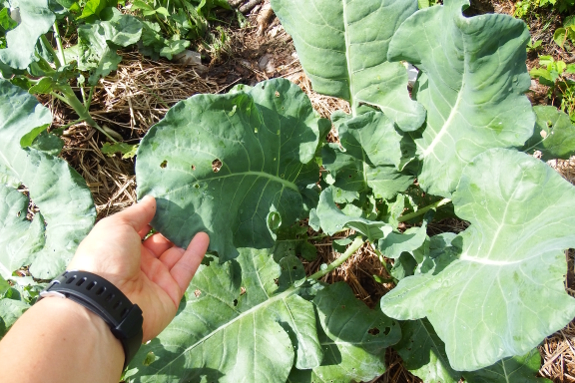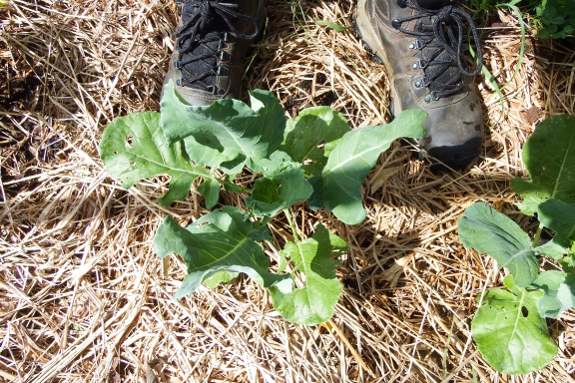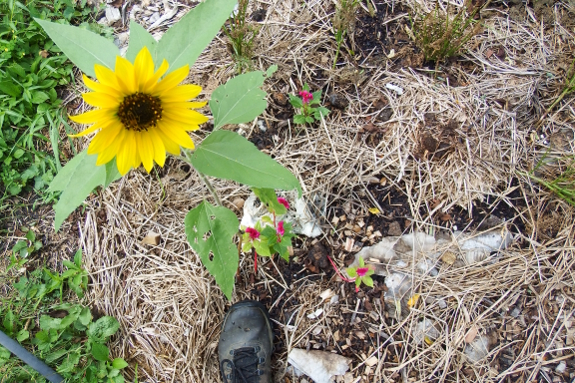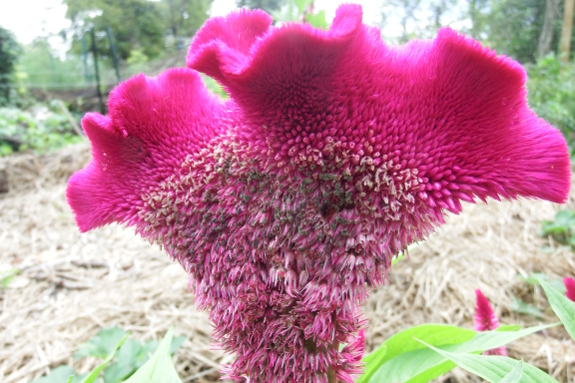
Manure vs. municipal compost

What's the biggest
lesson I've learned from year one in a new garden
spot? Don't put all of your soil fertility/amendment eggs in one basket!
Broccoli shows this
best. The plant above was set
out into a newly kill mulched bed using half-composted horse manure.
Not an optimal soil environment by a long shot. But I planted the
broccoli sets pretty deep, down into the native soil. And one month
later they're huge and thriving, ready to start forming big, beautiful
heads.

In contrast, the image
above shows a broccoli plant of the same variety started inside at the
same time and set out at the same time. This one went into a more
mature no-till bed too...except the "compost" I'd put on top of that
kill mulch was very low-nitrogen municipal compost. I won't be buying
that stuff again.

Lest you think I was
just cherry picking those broccoli photos, take a look at some flowers
in two different parts of the garden. Above, a sunflower that bloomed
at knee high plus cock's comb flowers barely as big as a dime. I'll bet
you can guess what they were growing in --- municipal compost.

And a much more
satisfying cock's comb growing in a mixture of very well-composted cow
manure and topsoil. The sunflowers in this part of the garden are
towering over my head.
In a few years, cover crops plus regular manure/compost additions will have
built up a buffer of nitrogen and organic matter that will make it
harder to tell when amendments are hindering instead of helping. So I'm
glad we spread our net widely this year to try out most of the local
offerings when the ground is hungry and shows results fast!
Want more in-depth information? Browse through our books.
Or explore more posts by date or by subject.
About us: Anna Hess and Mark Hamilton spent over a decade living self-sufficiently in the mountains of Virginia before moving north to start over from scratch in the foothills of Ohio. They've experimented with permaculture, no-till gardening, trailersteading, home-based microbusinesses and much more, writing about their adventures in both blogs and books.
Want to be notified when new comments are posted on this page? Click on the RSS button after you add a comment to subscribe to the comment feed, or simply check the box beside "email replies to me" while writing your comment.

Hi Anna and Mark,
Another local farmer has seen similar effects. She thinks it is herbicide residues. I am not convinced. Which causes me to wonder if 'rawer' manure is even better if 'aged' in the soil. Maybe soil life or earthworm count would give a clue?
I am MOST curious as to what is really going on.
John